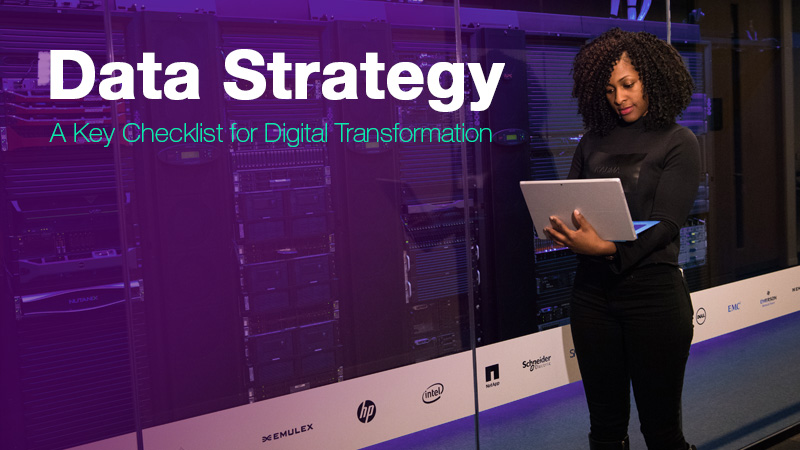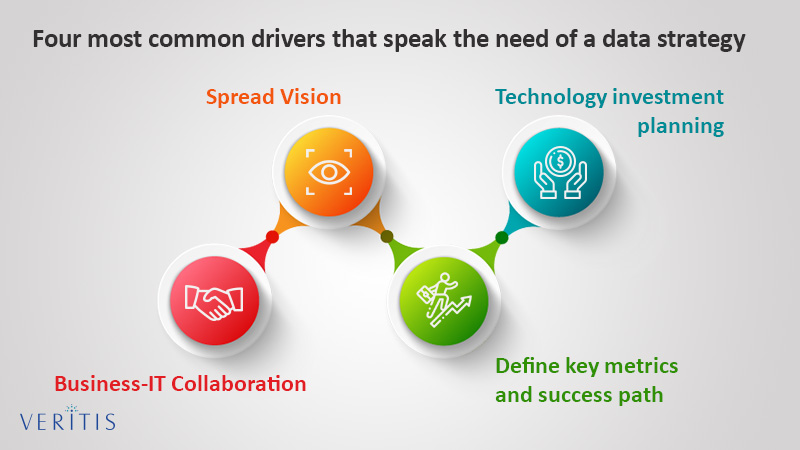
Data, today’s buzz word and the tomorrow’s most powerful tool! This is the fact heard everywhere, irrespective of industry.
Thanks to the digital revolution that has set a growth trajectory to data, currently and for the future.
The significance of data has gone to the serious extent that experts consider it as an integral part of the digital future.
While an effective data usage lays down path for business competitive edge, data harnessing stands at the core of a competitive business model.
Modern industry calls ‘data’ an asset with high saleable value and an important commodity for day-to-day processes.
Data Strategy for DX Implementation
A well-defined data strategy, aligned with the digitalization efforts, forms a strong basis for the successful Digital Transformation (DX/DT) process.
It holds high significance as a key checklist for developing an effective roadmap for DX implementation that companies pursue part of their IT modernization.
An effective data strategy defines the path for an organization to deal with its data as a structured and cross-domain asset that generates huge business value.
It plays a very key role in setting a DX vision and also offers a guidance, along with well-defined key performance indicators that help in evaluating and rationalizing all related data initiatives.
Four most common drivers that speak the need of a data strategy include:

Business-IT Collaboration
Drive core business objectives and IT perspectives onto a single path, thus encouraging business-led and technology-enabled approach in and out.
Spread Vision
Take ahead the vision across the enterprise bringing a perfect alignment and consistency among teams, reducing operational costs and optimizing performance.
Define key metrics and success path
Consistency shows a positive impact on key metrics and lays down path to how initiatives are measured, evaluated and tracked across the process chain.
Technology investment planning
Investing in legacy technologies might not fit in your new setup. At this point, a strategy considers the current state of your enterprise data environments and guides you accordingly on innovation and new technology investment.
Creating an Effective Data Strategy

An Enterprise Data Strategy implementation is a stepwise approach that begins with defining scope, followed by planning and implementation.
Defining the scope for an effective data strategy involves:
- Assessment and review of the existing analytic capabilities
- Mapping data flow within the organization
- Reviewing capabilities of the existing data management program
- Documenting useful data requirements
- Identifying best data management and business intelligence tools and solutions
- Developing a roadmap by defining initiatives in coordination with key stakeholders
Next comes the planning and implementation, where organizations will need to:
- Update the existing data management program through a well-planned approach
- Schedule a phase-wise implementation of the roadmap to meet the organizational needs to fit in the future program
- Bring in expertise to identify challenges to highlight and manage risk associated with the process
- Reach an agreement with the stakeholders on initiatives identified in the scope phase
On the opposite side, it’s equally important to consider the following factors that challenge the implementation of a comprehensive data strategy:
- Information access is key to planning an effective data strategy. Any lack of access to information leads to serious issues in achieving data integrity
- Data governance is another key factor, lack of which naturally lead to failure in agility in delivering projects on time and with accuracy
- Lack of archiving strategy is also another problem that can lead to challenges in data maintenance, causing data retainment and impacting performance
- Data storage is another critical aspect that obstructs organizational strengths to develop future capabilities
Implementation of the aforementioned steps and procedures completely eliminates the technical and functional gaps between the organization’s existing and future-state data management program.
On an EndNote
Take up the data strategy mission to make your Digital Transformation, data-driven!
Related Articles: